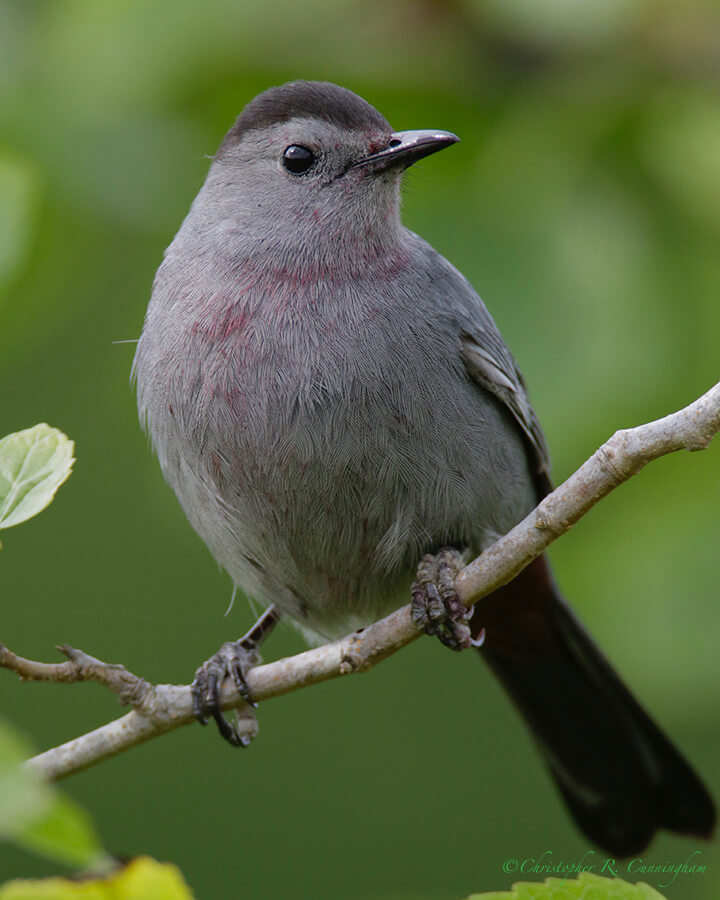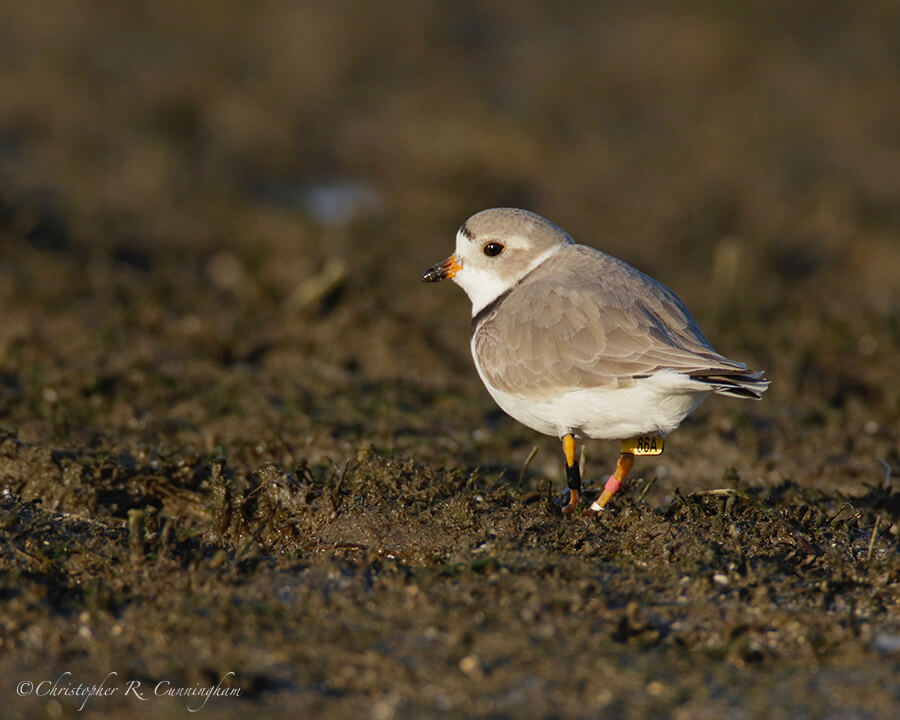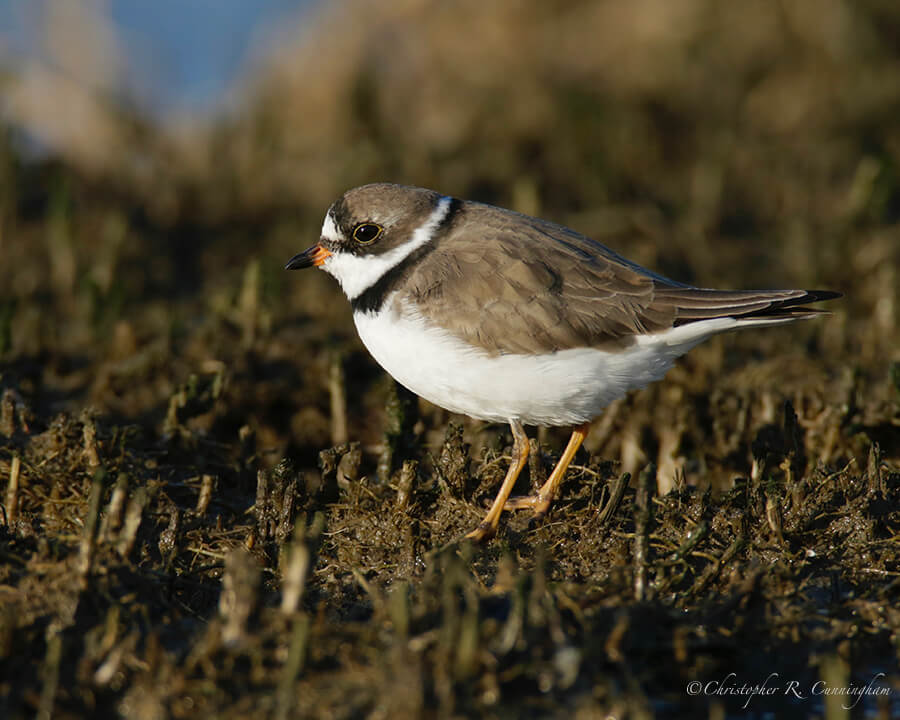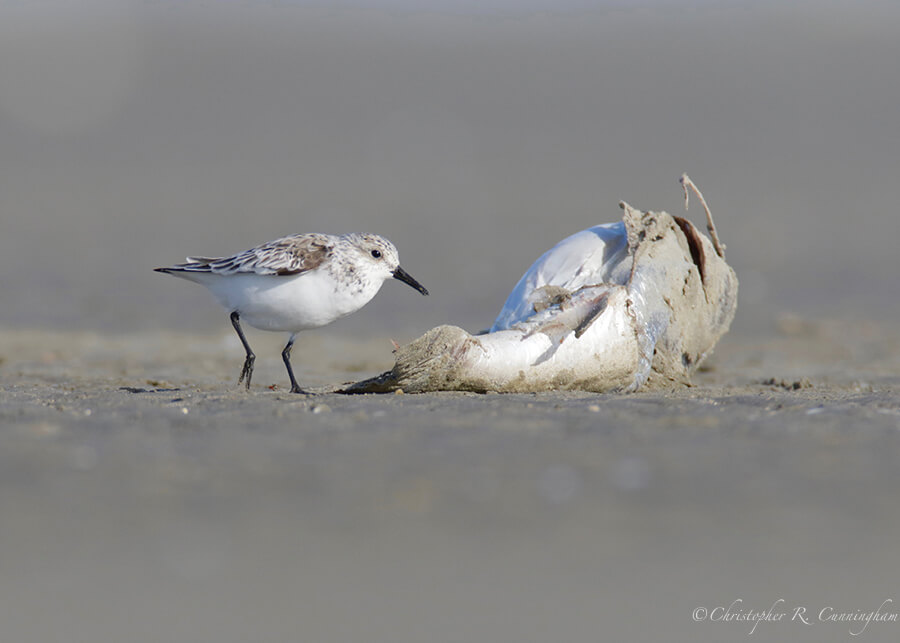Man begets, but land does not beget.–Cecil Rhodes

The recent major cold front has certainly brought some fantastic weather to the Texas Gulf Coast. And this weekend we hoped to make the most of it. Fully expecting to see a fallout, or the aftermath of one, we headed to Galveston. First stop on Saturday afternoon was Lafitte’s Cove. There were fewer birds than usual for a day in mid-April, and more people than birds.
I saw only a Scarlet Tanager, a Blue-winged Warbler, a Merlin, a Yellow-bellied Flycatcher, a few Ruby-throated Hummingbirds, an Ovenbird, some Brown Thrashers (residents), assorted ducks and shorebirds, and a few Gray Catbirds. The Gray Catbirds (along with the Scarlet Tanager) were eating from the mulberry trees near the gazebo. A greedy Northern Mockingbird was guarding the trees and ran off the other songbirds again and again.

East Beach was glorious on Saturday evening (and Sunday morning), as it usually is after cold fronts. There were large flocks of gulls, Dowitchers, terns, Brown Pelicans, Black Skimmers, and a few scattered waders. Most interesting to me were the small shorebirds. Sanderlings, Least Sandpipers, and Semipalmated Plovers were everywhere.
One Piping Plover was trying to pass unnoticed among the smallest shorebirds. This bird was sporting no less than five bands of assorted colors. Clearly an object of devotion, this creature is likely a member of a dying breed. Threatened everywhere it occurs, the Piping Plover numbers in less than five figures. In contrast, the nearly identical-looking (and just as darling) Semipalmated Plover is one of the most common shorebirds in the world.

Finally, the contrast between East Beach and Lafitte’s Cove was stark. East Beach was nearly abandoned and a perfectly lovely place to bird. Lafitte’s Cove was jammed cheek to jowl with tourists yakking it up in the “quiet zones.” The time has likely come to bid Lafitte’s Cove a fond adieu . . . .

©2018 Christopher R. Cunningham. All rights reserved. No text or images may be duplicated or distributed without permission.